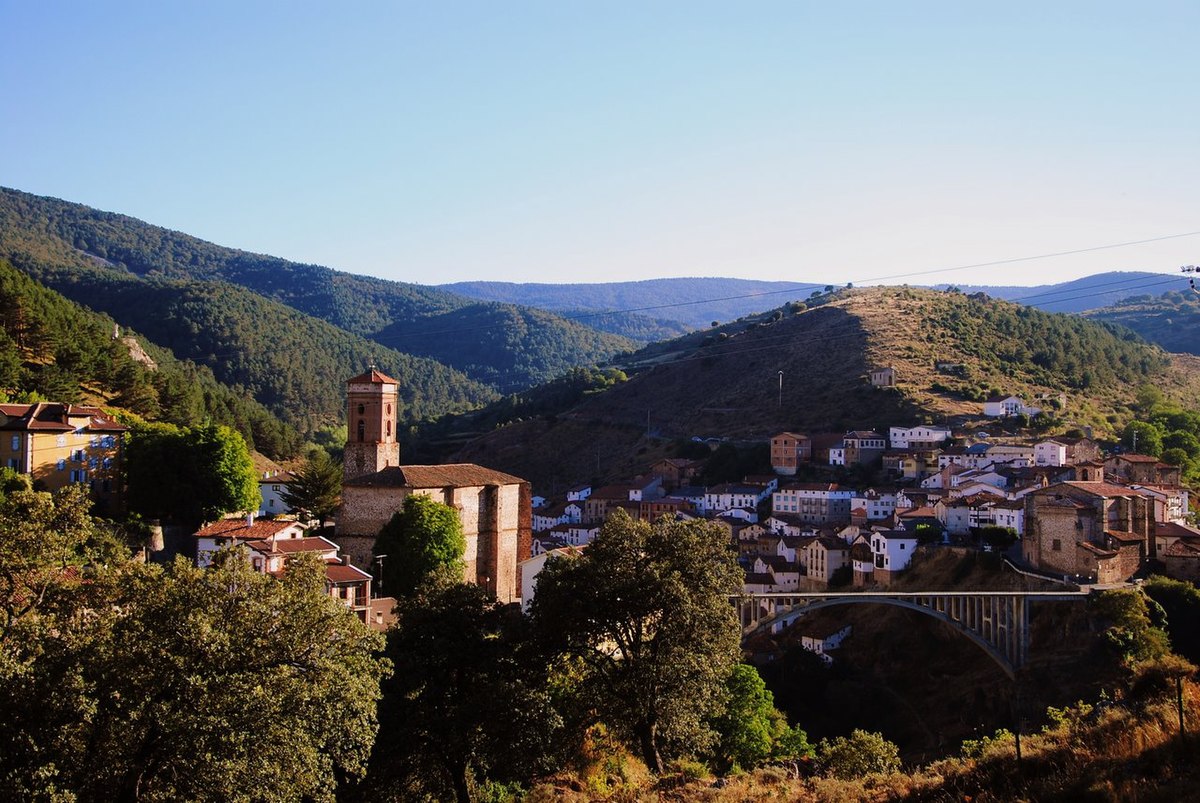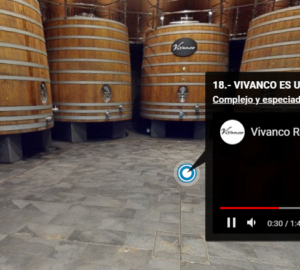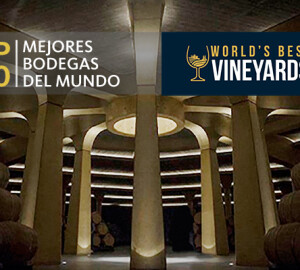Those who know La Rioja will know that it is the land of wine tourism par excellence. You only have to drive along one of its national roads to realise the influence of the vineyards on the landscapes of the region. An influence that also transcends all other aspects of life in La Rioja, with the cultivation of vines and winemaking as the main threads of the history, traditions and cultural wealth of this land. Today we would like to deviate a little from the most visited and recognisable sights of La Rioja, to discover equally beautiful and interesting places: those hidden in the area of the Sierra de Cameros. Located in the southern part of the Rioja Media region, these lands extend through the valleys formed by the passage of the Iregua, Najerilla and Leza rivers, which descend from the Iberian mountain range to die in the Ebro river, irrigating the whole of the Sierra de Cameros on their way. It is a A region dotted with beautiful, unique villages with a centuries-old cultural tradition.It is an exuberant natural wealth and a haven of peace and tranquillity for the traveller. Today we will get to know some of the key places not to be missed on a trip to the Sierra de Cameros. Perfect places to discover and enjoy the traditions, history, gastronomy and changing landscapes that this mountain range in La Rioja has to offer.
The Sierra de Cameros is in turn made up of the Sierra del Camero Viejo, in the basin of the river Leza, and the Sierra del Camero Nuevo, which rises up on the banks of the river Iregua and also reaches some areas of the basin of the river Najerilla. This is a typical mountain area of La Rioja, characterised by small municipalities whose buildings are scattered as best they can along the steep mountain slopes, some at altitudes of over 1,000 metres. The landscapes in which these villages are set are changeable and hide a multitude of contrasts: beech forests predominate, but there are also canyons, gorges, wide valleys and natural waterfalls. These landscapes, rich in fresh, green pastures, were what the transhumant shepherds came from the south in search of during the warmer months of the year. This form of livestock farming shaped the personality of the whole region and was the main economic activity of its people until about 100 years ago. The wool production, the gastronomy and some of the most native traditions of this land are still reminiscent of those times.
What to see in the Sierra de Cameros
Easily accessible by car, 30 to 40 minutes from Logroño.The Sierra de Cameros offers a multitude of points of interest for lovers of rural tourism and ecotourism. Discover some of the most typical mountain villages of La Rioja, their traditions and customs; Getting lost in the magnificent mountain landscapes of the area or practising outdoor sports in the heart of nature are some of the plans that the Sierra de Cameros has to offer. Not forgetting the delicious gastronomy typical of these mountain areas or the peace and tranquillity that its villages offer to the more urban visitors. Here are some of the places not to be missed during your visit to the Sierra de Cameros.
Torrecilla en Cameros
Half an hour's drive from Logroño is Torrecilla en Cameros, capital of the region of Tierra de Cameros and the most populated municipality in the whole area. It is an ideal place to enjoy the tranquillity of its streets during a stroll; to discover the typical architecture of the sierra: masonry houses, wooden roofs, cobbled floors... or to enjoy some of the most typical dishes, such as "alubias pintas" or "cucos", white beans exclusive to Torrecilla. A visit to the medieval bridge over the River Iregua, the 16th-century parish church of Nuestra Señora de las Vegas, and the chapels of San Lázaro and San Andrés are not to be missed.
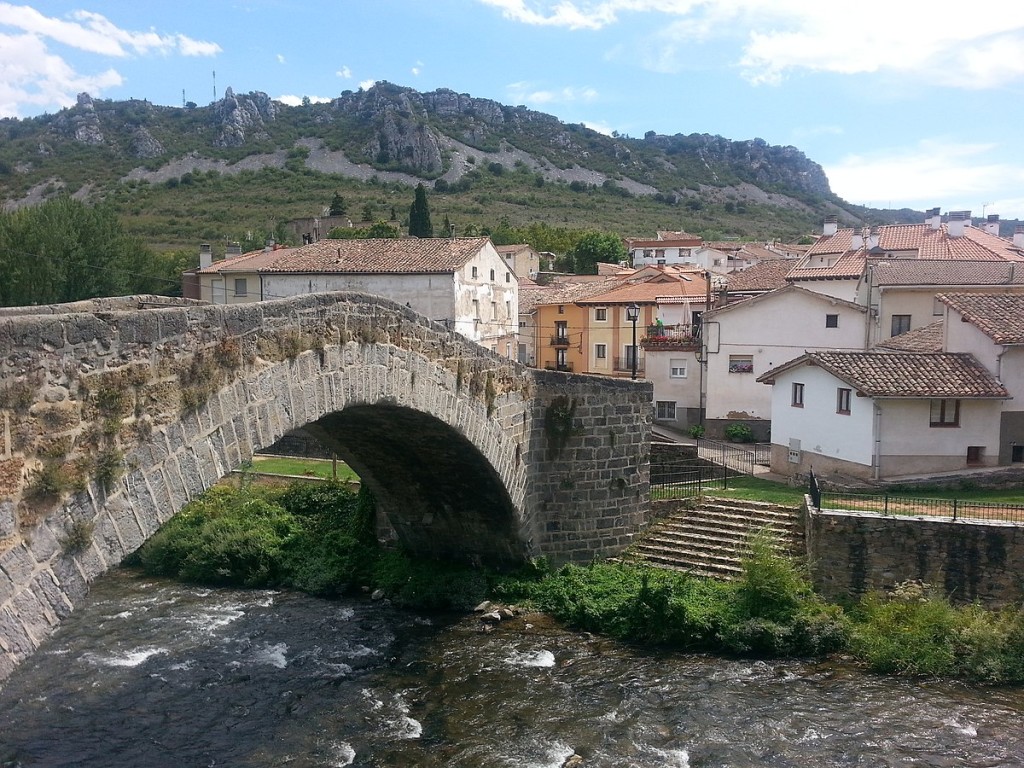
Soto en Cameros
Soto en Cameros is one of the best-known villages in Camero Viejo and owes its fame in part to the production of its famous marzipans, which are well worth a visit in themselves. marzipans from Sotomarzipans, which are well worth a visit in themselves. The surrounding area is also an ideal place for hiking. The more adventurous will love to take the path that leads from Soto en Cameros to the neighbouring village of Zenzano, where there are two sites with more than 200 dinosaur ichnites (footprints).
The canyon of the river Leza
From the town of Soto de Cameros itself we can take a path that runs along the banks of the river Leza, in the direction of Logroño and into the spectacular canyon of the river Leza.
Continuing along this easily accessible path, we will reach the Torrejón viewpoint, a viewpoint located on a natural ledge of the canyon itself, from where we can enjoy magnificent views of the canyon gorges, the forests that surround the foot of the slopes or watch the griffon vultures and Egyptian vultures that fly over the area.
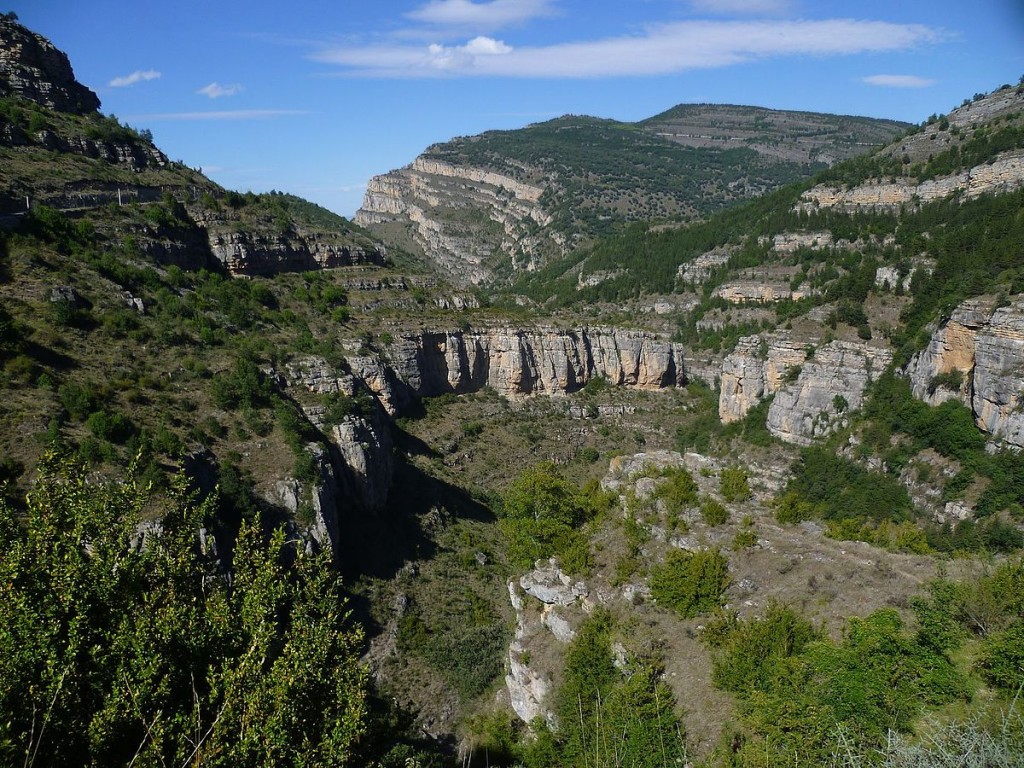
Trevijano
At the top of the canyon of the river Leza we find the small village of Trevijano, more than 1000 metres above sea level. It is well worth a visit to this enclave to enjoy an even higher viewpoint that allows you to contemplate the whole of La Rioja. Also to get to know the almazuela The wine that is made in this and other villages in the area is also worth a visit. A kind of production of blankets, tablecloths and other types of handmade garments made from remnants and leftover fabrics.
Transhumance and Cameros Interpretation Centre
In Venta de Piqueras, which can be reached by following the national road 111, we can find the Interpretation Centre of Transhumance and Cameros. This museum exhibits all kinds of tools, clothing and implements related to this livestock farming practice that was so important for this region.
Ortigosa de Cameros
Another of the municipalities that should not be missed in the Cameros region is that of Ortigosa de Cameros, in the Camero Nuevo. Ortigosa de Camerosin Camero Nuevo. In this town we can discover some magnificent examples of 16th-century religious architecture in the region, such as the churches of San Martín and San Miguel or the hermitage of Santa Lucía. It is also essential to enjoy the views of the area from the impressive iron bridge and to visit the Cavesof Ortigosa, where you will find, among others, the Cave of La Paz, an underground route of more than 200 metres where you can see stalactites, stalagmites and other types of limestone formations.
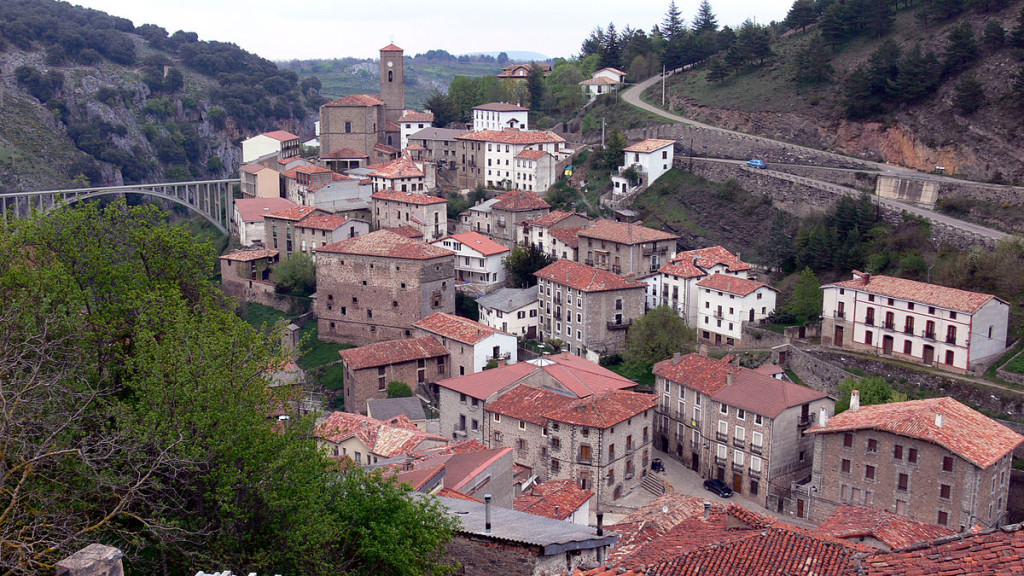
Sierra Cebollera Natural Park
We close our visit to the Sierra de Cameros with what is possibly the most famous natural enclave in the region, the Sierra Cebollera Natural Park. An unbeatable place to enjoy nature and the countryside. outdoor sports: hiking, cycling routes, canyoning, climbing... The best place to start is at the Interpretation Centre of the Sierra Cebollera Nature Park, in the municipality of Villoslada de Cameros, where you can find out about the different routes you can follow to get to know the Sierra Cebollera. It is essential to do the route of the waterfallsThe route starts at the Lomos de Orio hermitage and covers almost 7 km. in a circular route. This route runs between 1,300 and 1,500 metres above sea level and through it we can get to the magnificent Puente Ra waterfall.






